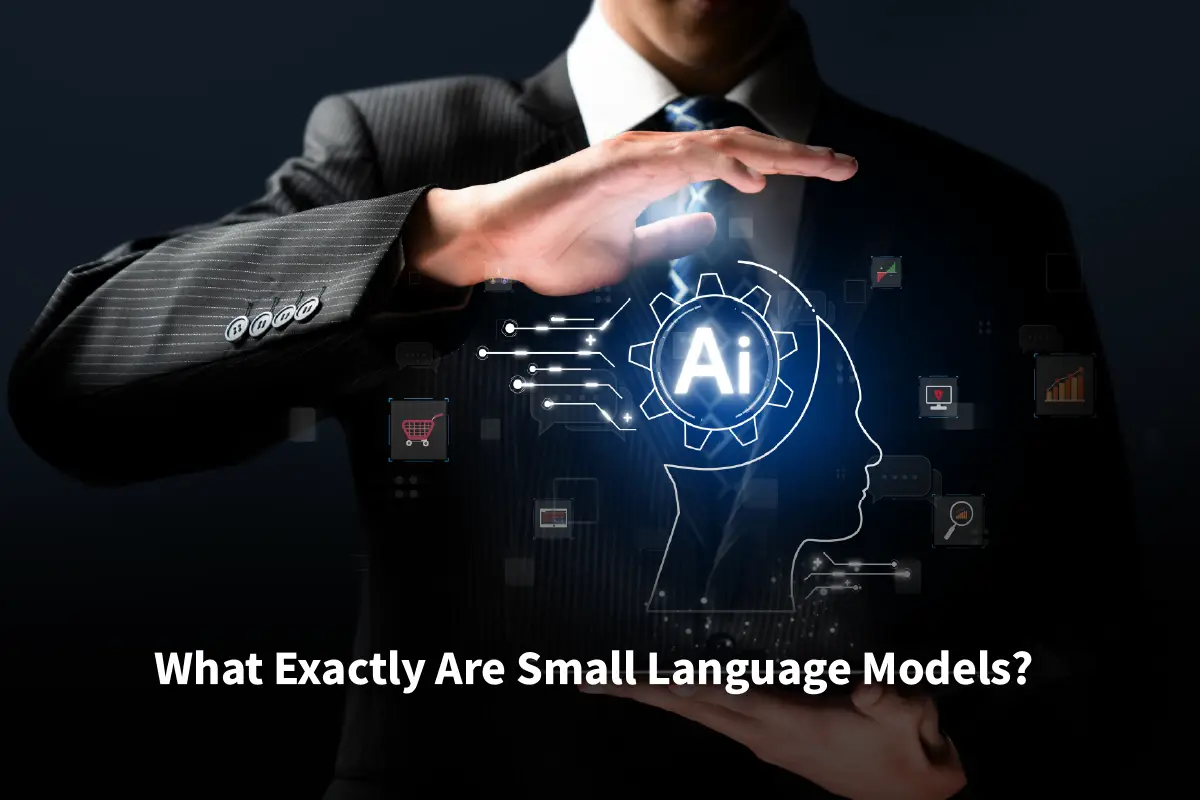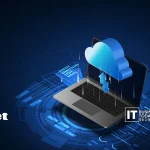何年もの間 人工知能 はスケールによって支配されてきました。大規模なデータセットでトレーニングされた大規模なモデルは、膨大なコンピューティングパワーを使用します。これがAIを飛躍的に発展させる原動力なのです。ビジネスリーダーたちは、畏敬の念と心配の両方を感じていました。潜在的な可能性を感じつつも、これらの巨大企業と協業する際の高いコスト、複雑さ、不明確な詳細を懸念したのです。パラメータの増加という大きな見出しの下で、静かな変化が起きています。スモール・ランゲージ・モデル(SLM)は、単なるニッチな選択肢ではありません。企業にとって賢い選択であり、AI活用の強力な未来なのです。
あらゆるビジネス用途において、「大きければ大きいほど良い」と考えられていた時代は終わりを告げようとしています。大規模言語モデル(LLM)の導入には大きな課題があります。多くの計算能力が必要で、処理速度も遅くなります。独自のデータを管理するのは大変で、運用の負担も大きくなります。このため、多くの企業ではLLMを効果的に使用することが困難です。そこで輝くのがSLMです。SLMは、持続可能で責任ある真のAI統合をリードします。
スモール・ランゲージ・モデルとは?

SLMは、より大きなモデルの簡易版ではなく、専門家として捉えてください。SLMはLLMと同じようなアーキテクチャーを共有しています。トランスフォーマー・ニューラル・ネットワークをベースに構築されています。しかし、SLMはより小さく、厳選されたデータセットで学習されます。パラメータはより少ない。これは、学習時にモデルが学習する内部変数です。LLMは数十億から数兆のパラメータを持ちます。一方、SLMは通常数百万から数十億です。
この意図的なダウンサイジングは、能力を犠牲にすることではなく、目的に合わせて最適化することなのです。SLMは、大規模モデルの広く浅い知識を深いスキルと交換します。SLMは、特定のタスクや領域において、スピードと柔軟性を提供します。熟練した職人がいくつかの重要な道具を使う様子を思い浮かべてください。一方、巨大な倉庫にはありとあらゆる工具があふれています。多くの仕事において、職人はより速く、より正確に働きます。その上、雇用もしやすい。
こちらもお読みください: 日本ブランドはどのようにAIを使用して、超パーソナライズされたロイヤリティ・プログラムを強化しているか
スモールビジネスへの説得力ある企業ケース
SLMは実業務に多くの大きなメリットをもたらします:
- 高コストと資源使用:LLMのトレーニングと実行には多くの電力が必要です。高価なハードウェアを必要とし、膨大なエネルギーを消費します。対照的に、SLMは軽量です。標準的なエンタープライズ・サーバーで十分に動作します。また、ローカル・マシンやエッジ・デバイスでも動作します。そのため、導入が容易で、コストを削減し、AIの使用による二酸化炭素排出量を削減することができます。SLMを導入するために、大規模なクラウド契約を交渉したり、カスタム・データセンターを構築したりする必要はありません。財務モデルは法外なものから実用的なものへと変化します。実際に マイクロソフトの Phi-3-mini(38億パラメータ)は、MMLUで約69%、MT-benchで8.38を記録し、コンパクトなサイズにもかかわらず、Llama-3(8B)のような大型モデルに匹敵します。
- データ管理とプライバシー:顧客記録や財務情報など、機密性の高いビジネスデータをサードパーティのLLMと共有することは、セキュリティやコンプライアンスに大きなリスクをもたらす可能性があります。データの滞留、漏洩、トレーニングデータの意図しない使用は大きな懸念事項です。SLMは解決策を提供します。SLMは、企業独自のデータを使用して、オンサイトまたはセキュアなプライベート・クラウド環境でトレーニングすることができます。これにより、特化したモデルを作成することができます。SLMは企業独自の知識やプロセスを把握します。また、重要な知的財産を外部から守ることができます。金融、ヘルスケア、法律サービスなどの規制分野では、コントロールが鍵となります。
- 特化した性能と精度:大規模なLLMは、多くのトピックについて少しは知っているかもしれません。しかし、業界用語や社内プロセス、特定の製品ラインについての理解は通常不足しています。そのため、一般的で役に立たない、あるいは幻覚のようなアウトプットになってしまうこともあります。SLMは、ビジネス機能に関する特定の高品質なデータセットでトレーニングされたものであれば、より効果的です。SLMは多くのタスクを処理することができます。例えば、半導体製造におけるテクニカルサポートチケットの解析。また、M&Aでは法的な契約書を要約します。さらに、B2Bカタログの商品説明も作成します。このように集中することで、その分野での正確性と関連性が高まります。SLMはあなたのビジネスの言葉を話します。質の高い医学文献と匿名化された患者記録のみを対象としたSLMは、一般的なLLMよりも優れています。臨床ノートの要約や医療コーディングの支援において輝きを放ち、重大なエラーも少なくなります。
- エッジでのスピードと敏捷性: 遅延は重要です。クラウドホスティングされたLLMからの応答を待つと、ユーザーエクスペリエンスが損なわれます。これは特にリアルタイムアプリに当てはまります。例えば、顧客サービスのチャットボットやインタラクティブなデータ分析ツールなどです。SLMはサイズが小さいため、光速の推論を実現します。このスピードにより、従業員のラップトップ、工場のデバイス、または地域オフィスに直接導入することができます。これがネットワークの「エッジ」です。エッジデプロイは、高速レスポンスを必要とするアプリケーションにとって非常に重要です。また、オフラインでの作業や帯域幅の限られた地域での作業にも役立ちます。 ファイ3ミニ例えば、わずか~1.8GBのRAMを搭載したデバイスで動作し、iPhone 14では量子化モードで毎秒12トークン以上を処理します。現場の技術者は、頑丈なタブレットで迅速かつ正確な修理ガイダンスを得ることができます。これは、ローカルSLMのおかげで、接続が弱い遠隔地でも機能します。
- 透明性と微調整:LLMはその大きさと複雑さゆえに、しばしば「ブラックボックス」です。そのため、LLMがなぜ特定の出力を出すのかを見たり、特定のバイアスを修正したりすることは困難です。SLMは、サイズが小さく、ドメイン固有であることが多いため、本質的に解釈しやすい。出力をトレーニングデータの影響に遡ることが容易です。また、SLMの微調整は、大規模なLLMを再トレーニングするよりも迅速かつ低コストです。SLMの微調整には、新しいタスクの調整や新しいデータの追加が含まれます。この俊敏性により、企業はモデルを改善し続けることができます。大規模な再トレーニングを行うことなく、変化するニーズに適応することができます。継続的な改善が可能になります。特定のタスクに合わせた小さなモデルは、エネルギー使用量を最大で 90%.
今日のSLM
これは単なる学術的な推測ではありません。先進的な企業やテクノロジー・プロバイダーは、すでに小規模モデルの力を活用しています:
- マイクロソフトのPhiファミリー: Phi-3-miniのようなモデルは、Llama-3のような大型のものと同じように、標準的な推論テストで結果を出すことができます。しかも、スマートフォンでスムーズに動作するほどコンパクトです。これにより、真にパーソナルでオフラインのAIアシスタントへの扉が開かれます。
- ドメイン別の強豪: 金融機関は、SEC提出書類、決算報告書、財務ニュースに焦点を当てたSLMを使用しています。これらのモデルは、情報を迅速に要約し、センチメントを分析するのに役立ちます。製薬会社は、SLMを使用して文献レビューを迅速化します。これらのモデルは、研究論文や臨床試験データで学習されます。製造業では、工場の現場でSLMを使用します。リアルタイムのセンサー・データ・ログを分析し、メンテナンスの必要性を予測します。
- AIの民主化: SLMに必要なリソースは少なくて済みます。このため、中小企業や大企業の部門は、強力なAIソリューションを作成し、使用することができます。AIの専門チームや大きな予算がなくても可能です。人事部門がSLMを構築すれば、非常に具体的な職務基準に基づいて履歴書をスクリーニングできます。マーケティングチームは、ローカライズされた広告コピーのバリエーションを生成するSLMを作成することができます。これは、AIがチームレベルで真に運用できるようになったということです。
戦略的なSLMの実施
SLMを採用するということは、考え方を変えるということです。最大のモデルを目指すのではなく、タスクに適したモデルを見つけることに集中すべきなのです。ここでは、リーダーがこの移行にどのように取り組めばよいかを紹介します:
- インパクトが大きく、限定されたユースケースの特定: 専門知識、迅速な対応、または、ビジネス上の重要な問題に集中的に取り組みます。 プライバシー が重要です。現在、手作業や一般的な自動化によって滞っているタスクを探しましょう。
ここにいくつかの素晴らしい出発点があります:
-
- 社内ナレッジベース検索
- テクニカルサポートのトリアージ
- 契約条項の抽出
- パーソナライズされたセールスメールの作成
- リアルタイムのログ分析
明確なROIを伴う達成可能な勝利に焦点を当てます。
- データキュレーションの優先順位: ガベージ・イン、ガベージ・アウト "という格言は、SLMで増幅されます。SLMの性能は、トレーニングデータの質と関連性にかかっています。価値の高い社内データの特定、クリーニング、構造化に投資してください。このデータ資産が競争力の堀となります。高品質で集中的なデータセットが、高性能で特化したモデルを生み出します。
- ハイブリッド・アーキテクチャの採用: SLMは必ずしもLLMに取って代わるものではなく、多くの場合LLMを補完するものです。タスクに最適なツール」というアプローチを検討しましょう。創造的なアイデアや、広く一般に知られている知識を活用するには、大規模で一般的なLLMを使用します。深い知識、高速パフォーマンス、データ・セキュリティが必要なタスクには、特化したSLMを使用します。これにより、コストとパフォーマンスの両方が最適化されます。
- インハウスの専門知識の構築(思慮深く): SLM の管理は LLM よりも簡単ですが、それでもある程度の専門知識は必要です。オープンソースのSLMを微調整して導入できるよう、現在のデータエンジニアや開発者をトレーニングしてください。また、マネージドSLMプラットフォームを提供するベンダーと組むこともできます。目的は能力であり、必ずしも大規模な社内AI研究所を建設することではありません。
- 強固なガバナンスの確立: 小規模なモデルであっても、責任あるAIの原則が適用されます。特に内部データを使用する場合は、出力を監視し、バイアスを発見するシステムを構築してください。可能な限り説明可能性を確保し、モデルのライフサイクルを通じてデータを安全に管理します。積極的なガバナンスは信頼を築き、リスクを軽減します。
未来は集中と効率

エンタープライズAIの軌跡は、まぎれもなく実用主義へと向かっています。スモール・ランゲージ・モデルは、テクノロジーがいかに成熟したかを示しています。AIは、力技から精密さ、効率性、制御性へとフォーカスを移します。AIをビジネスオペレーションにスムーズに適合させることを可能にします。これは現実的な問題の解決に役立ち、明確なROIを提供します。さらに、大規模なソリューションに伴う高コストやデータリスクを回避することもできます。
ビジネスリーダーは次のことを知っておく必要があります。それは、適切なサイズのインテリジェンスを戦略的に活用することから生まれます。それは、貴社のビジネス言語を熟知したモデルから生まれるでしょう。セキュリティの範囲内で動作します。迅速に対応し、価値を提供します。リソースを無駄にすることなく。ラージ・ランゲージ・モデルの時代はイマジネーションをかき立てました。そして今、スモール・ランゲージ・モデルの時代が真の永続的な変化をもたらすでしょう。エンタープライズAIにおける静かな革命が始まり、その影響は広く共鳴するでしょう。このシフトを無視すれば、競合他社が主導権を握ることになります。真のビジネス・インテリジェンスは、単なる規模ではなく、集中した専門知識から生まれることを知っているからです。未来は、専門化され、効率化され、コントロール可能なもの。未来は小規模のものです。







